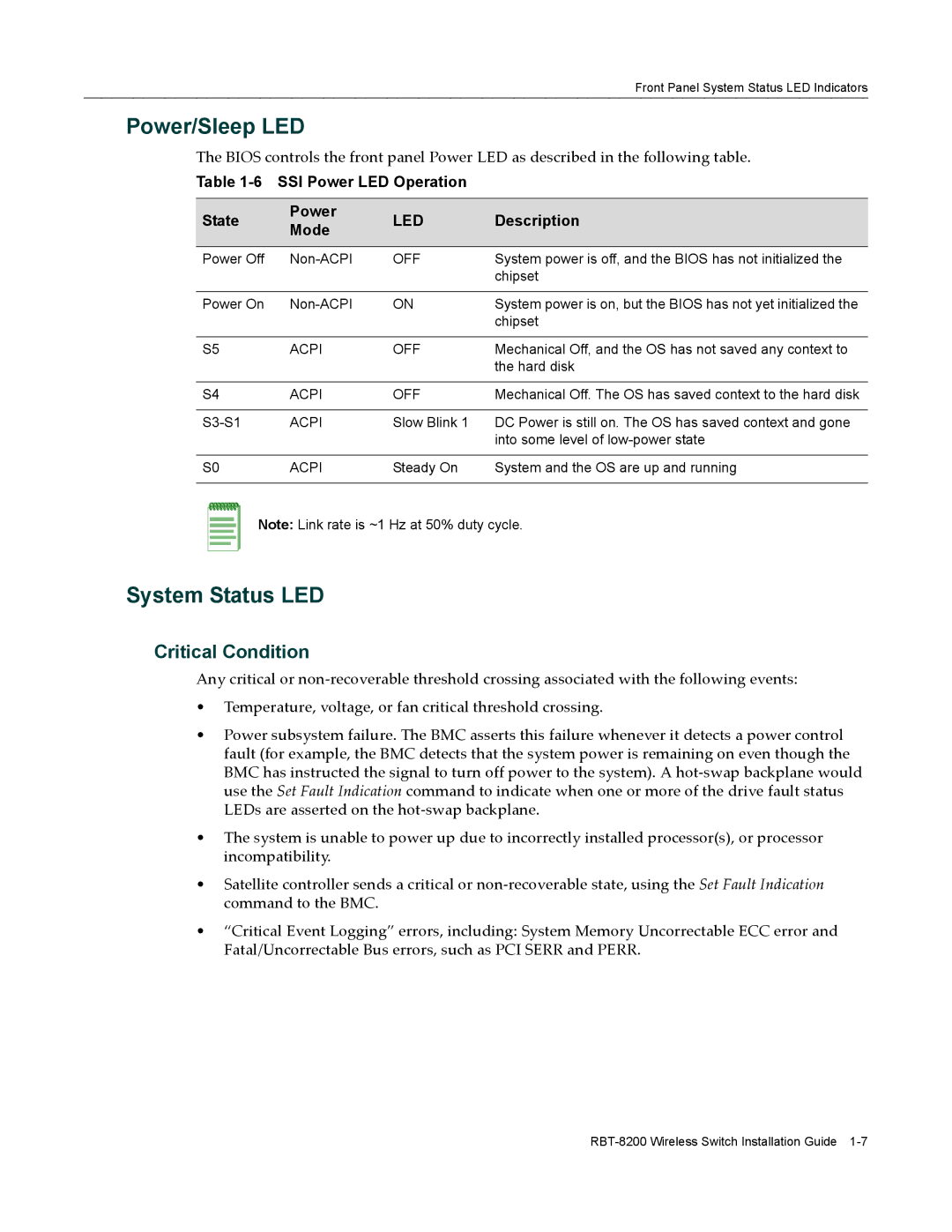
Front Panel System Status LED Indicators
Power/Sleep LED
The BIOS controls the front panel Power LED as described in the following table.
Table
State | Power | LED | Description | |
Mode | ||||
|
|
| ||
|
|
|
| |
Power Off | OFF | System power is off, and the BIOS has not initialized the | ||
|
|
| chipset | |
|
|
|
| |
Power On | ON | System power is on, but the BIOS has not yet initialized the | ||
|
|
| chipset | |
|
|
|
| |
S5 | ACPI | OFF | Mechanical Off, and the OS has not saved any context to | |
|
|
| the hard disk | |
|
|
|
| |
S4 | ACPI | OFF | Mechanical Off. The OS has saved context to the hard disk | |
|
|
|
| |
ACPI | Slow Blink 1 | DC Power is still on. The OS has saved context and gone | ||
|
|
| into some level of | |
|
|
|
| |
S0 | ACPI | Steady On | System and the OS are up and running | |
|
|
|
|
Note: Link rate is ~1 Hz at 50% duty cycle.
System Status LED
Critical Condition
Any critical or non‐recoverable threshold crossing associated with the following events:
•Temperature, voltage, or fan critical threshold crossing.
•Power subsystem failure. The BMC asserts this failure whenever it detects a power control fault (for example, the BMC detects that the system power is remaining on even though the BMC has instructed the signal to turn off power to the system). A hot‐swap backplane would use the Set Fault Indication command to indicate when one or more of the drive fault status LEDs are asserted on the hot‐swap backplane.
•The system is unable to power up due to incorrectly installed processor(s), or processor incompatibility.
•Satellite controller sends a critical or non‐recoverable state, using the Set Fault Indication command to the BMC.
•“Critical Event Logging” errors, including: System Memory Uncorrectable ECC error and Fatal/Uncorrectable Bus errors, such as PCI SERR and PERR.
